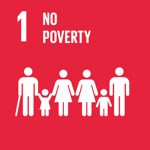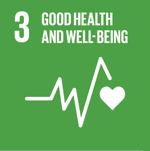Frog Skin in Cassava
 Colombia
Colombia
 Costa Rica
Costa Rica
 Paraguay
Paraguay
Executive Summary
Cassava (Manihot esculenta Crantz) is a staple in the diet of 17.8 million people worldwide. In addition to constituting an industrial crop with high potential that generates income for small and medium-scale farmers, it contributes to the social development of the regions where it is grown. Cassava is highly adapted to marginal growth conditions, a relevant aspect for farmers who must face unpredictable weather patterns in the coming years. The long cycle of cassava cultivation and its production in environments where winter does not interrupt cycles, makes it necessary to establish strategies to mitigate the economic impact of diseases such as frogskin disease (CS for its Spanish acronym), which adapts easily in environments with high temperatures and generates losses in some Latin American countries of over 90%.
The project contributed to strengthen cassava production, improving the socioeconomic well-being of producers and decreasing frogskin disease in Colombia, Costa Rica, and Paraguay. The project implemented a certified vegetative seed production system using in vitro techniques and thermal cameras to multiply healthy seeds at low cost. The effect of micro-elements and plant extracts as fertilizers on the behavior of the disease in susceptible local varieties was evaluated. Climatic modeling allowed a complete epidemiological study of the disease and identified the possible natural vectors that transmit it. Also, resistant or tolerant cassava genotypes were selected, facilitating efficient management of frogskin disease in the targeted areas.
The technological solution
The project characterized the areas of current and potential incidence of frogskin disease in the three participating countries and produced current and projected incidence maps for 2020 and 2050, considering the possible effects of climate change. They will be useful to project the possible effects of the disease and prepare mitigation plans.
It also built five thermal chambers with an automated system to regulate humidity, irrigation, and temperature to produce disease-free materials. The macropropagation and cleaning process lasted 30 days during which the plants grew at a temperature between 45-50 ° C. Subsequently, the plants were evaluated for the presence or absence of the phytoplasma. Disease-free plants were also multiplied in vitro. The material was distributed to researchers and producers for evaluation under field conditions.
The use of resistance inducers and fertilizers was also evaluated, and disease resistant or tolerant genotypes were selected.
Results
Three maps were generated for each country on prediction of the distribution of the frogskin disease in cassava, current, and future in 2020, and 2050.
It was concluded that precipitation and temperature are related to the expression of the disease.
Five thermal chambers were built, and 40,520 plants were produced. Results indicated a 0% incidence of plants with frogskin symptoms. 6,200 plants were also produced in vitro and distributed to farmers in Colombia and Costa Rica. In Paraguay, 55 cassava genotypes were introduced in vitro and 5,800 in vitro plants were multiplied for evaluation and distribution to farmers.
Fertilizer and resistance inductors were evaluated in the field. A 20% increase in yield was obtained with the Kendal resistance inducer and a 10 % decrease in the disease incidence.
Two frogskin disease tolerant genotypes were identified that presented high yields and an incidence of less than 5% and severity grade 2 and two susceptible genotypes with an incidence of 60% and high severity (grade 3-4).
In Colombia, 91 farmers were trained in macropropagation and selection of material for frogskin-free plants. In Costa Rica, 15 seed farmers leaders and 30 technicians and farmers were trained on the propagation technique. In Paraguay, 367 (255 men and 112 women) technicians, producer leaders, and students were trained on frogskin disease in cassava. Five Paraguayan researchers were trained in different topics at CIAT and INTA, Costa Rica.
Two booklets, one brochure, three blogs, two posters, seven abstracts, one master's thesis and two doctoral theses, three scientific articles and six presentations at international conferences were produced.
Beneficiaries
The direct beneficiaries were the 503 cassava producers from the three countries that were trained in the project on the frogskin disease, as well as on ways to propagate healthy materials. Hundreds of researchers, technicians and undergraduate and postgraduate students who participated in the project also benefited directly, both through the implementation, as well as access to information on the web, publications and presentations made at international conferences.
Indirectly, thousands of farmers will benefit through the use of disease-free plants and the application of the knowledge generated in the project.
Sustainable Development Goals



Participating Organizations
Executor
- International Center for Tropical Agriculture (CIAT) - Colombia
Co-executor
- Instituto Nacional de Innovación y Transferencia en Tecnología Agropecuaria (INTA) - Costa Rica
- Instituto Paraguayo de Tecnología Agraria (IPTA) - Paraguay
- UniCórdoba - Colombia




